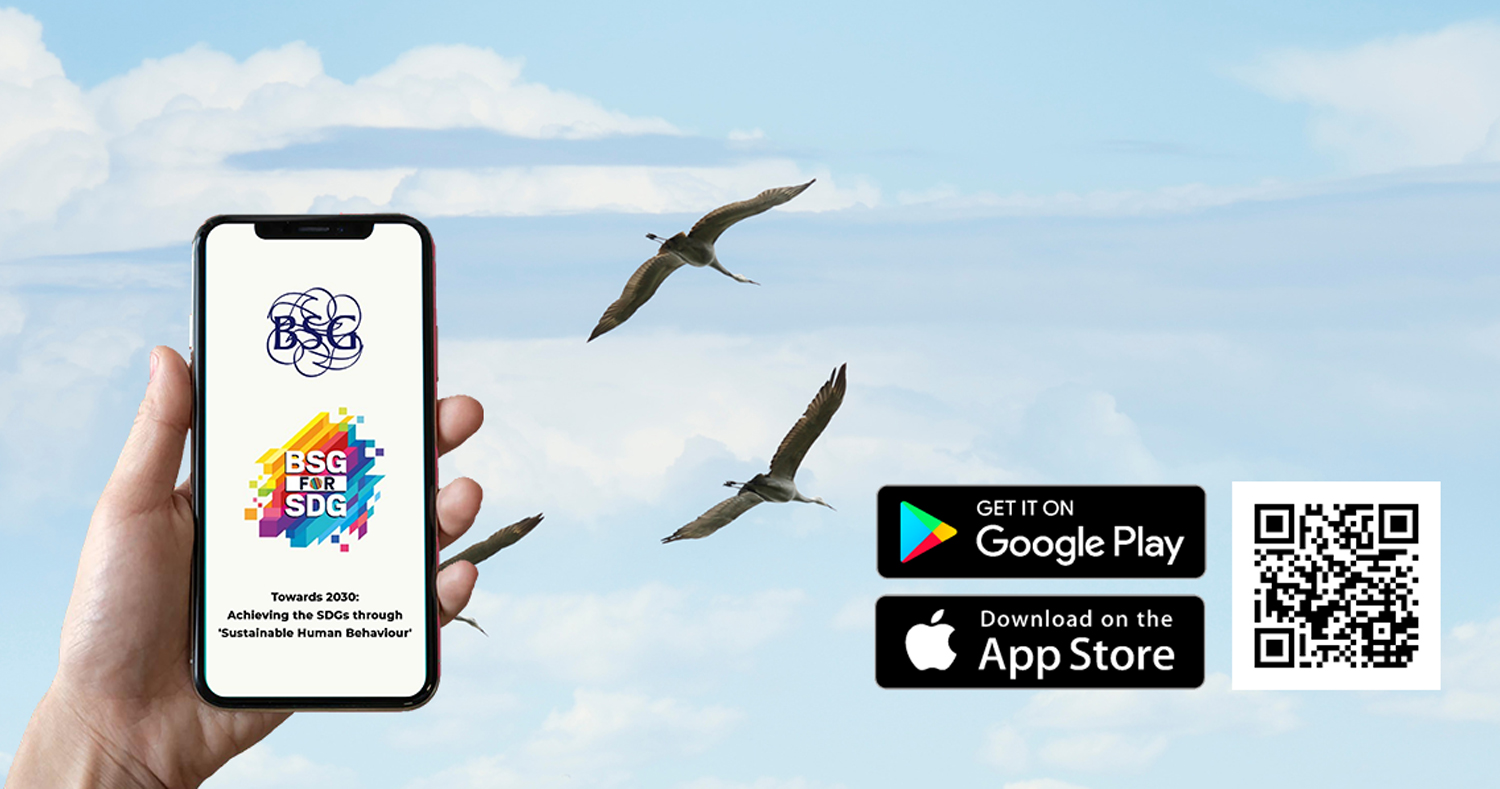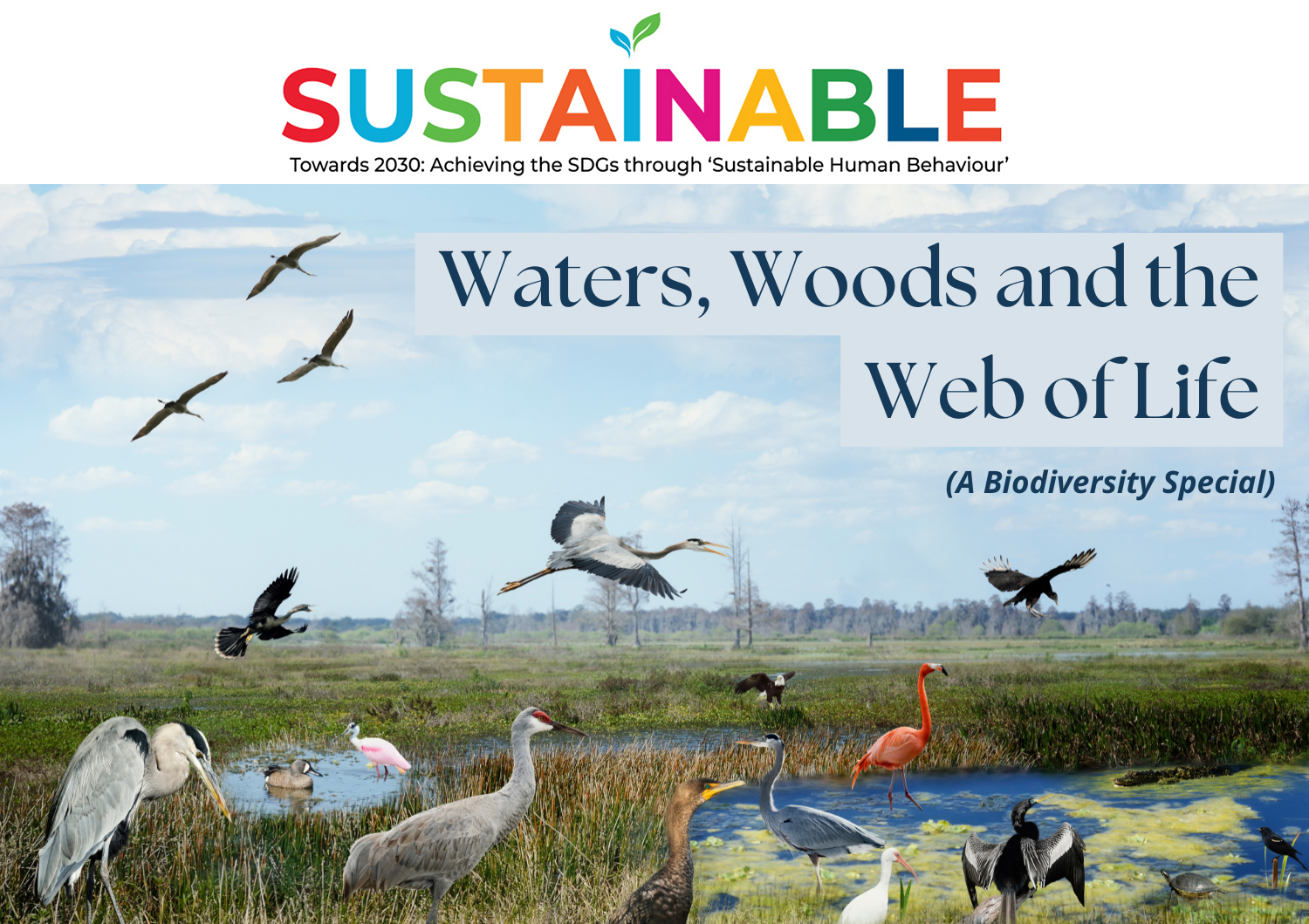

Greetings from BSG Chairperson Mr. Vishesh Gupta
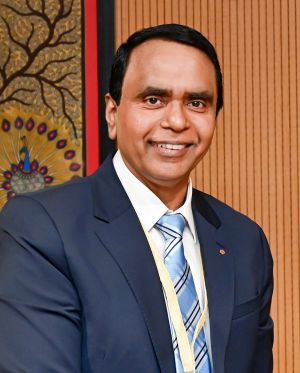
Dear Readers,
I wish you a lovely spring. I feel March carries a different kind of magic. It is the month of return. The first green shoots push through the soil, ponds and lakes, once silent, ripple with new life, and migratory birds trace their way home. The world shifts, not in grand, sweeping gestures, but in small, steady signs of renewal. It is a reminder that healing is always possible.
This issue, ‘Waters, Woods, and the Web of Life,’ is about the power of restoration. Across India, forgotten water bodies and depleted forests are being brought back to life thanks to the efforts of individuals and communities that refuse to accept loss as inevitable. Among them is Ramveer Tanwar, an environmentalist dedicated to reviving ponds and green cover.
In villages where Mr. Tanwar has revived forgotten water bodies, the return of a single pond has rewritten destinies. Farmers who once abandoned their land now walk its edges again. Birds that vanished decades ago return, their songs filling the air once more. These restored ecosystems don’t just bring back lost species; they safeguard livelihoods, improve groundwater levels, and make communities more resilient to climate extremes. In this issue, we feature an exclusive interview with Ramveer Tanwar, popularly known as ‘The Pond Man of India’, where he shares insights from his journey and some lessons we can all take forward.
And so, the question lingers: What if we, too, could listen? What if we could stand before a forest and hear the silent language of its trees, and recognize each rustling leaf as part of a grand, unbroken symphony? The world is not asking for our pity—it is asking for our reverence. The statistics warn us, but the forests, the rivers, the creatures—they invite us. To protect them is not a duty, but a privilege. It is an invitation to stand in awe, to be humbled, and to take our place—not as masters, but as kin.
March is a time of awakening. Let’s step forward with renewed commitment, eyes open to the beauty that still surrounds us, and a resolve to protect it. Welcome to the 22nd issue of Sustainable.
Warm Regards
Vishesh Gupta
Chairperson, Bharat Soka Gakkai
There are places where nature thrives untouched, where all life moves gently, and where time seems to pause in quiet admiration. A once-forgotten pond, now restored, shimmers under the sun. Its surface rippling with the flicker of dragonflies and the silent glides of turtles. Beneath the water, unseen by human eyes, roots intertwine like clasped hands, filtering impurities and breathing life into an entire ecosystem. Each drop carries a story—of return, of resilience, of a world that waits patiently for our recognition.
But across the world, these stories are being erased. 64% of the world’s wetlands have disappeared since 1900, drained for agriculture and urban expansion. India alone has lost over 30% of its wetlands in the last four decades. As these water bodies vanish, so does biodiversity—Freshwater species are in critical danger, with 62% of turtles, one-third of amphibians, and over a quarter of fish at risk of extinction. Wetlands are nurseries for fish, homes for amphibians, and rest stops for migratory birds. A single healthy wetland can host hundreds of plant species and thousands of insect species, forming the foundation of entire food chains. Meanwhile, one football field of forest was lost every 5 seconds in 2022, erasing habitats for countless creatures—from the hornbills that seed entire forests to the fungi that sustain underground ecosystems.
Likewise, forests act as the lungs of the planet, absorbing nearly 30% of the carbon dioxide released into the atmosphere each year. Yet, industrial expansion, agriculture, and urbanization are stripping the land of these natural protectors, weakening the very systems that sustain us. Without trees, soil erodes, water sources dry up, and the delicate balance of climate regulation is thrown into chaos.
In India, nearly 600 million people rely on forests and wetlands for their livelihoods, from fishing and farming to beekeeping and medicine. Yet, with declining water levels and eroded soil, once-fertile lands turn barren, forcing communities to migrate in search of survival. Where restoration happens, hope returns. Reviving even a single pond can raise groundwater levels, reduce temperatures, and bring back lost species. These are not just landscapes; they are life-support systems.
This revival, however, does not happen on its own. It takes those who see beyond what is lost to what can be restored. Mr. Ramveer Tanwar, through his organization Say Earth, has dedicated himself to reviving ponds and forests, breathing life back into neglected landscapes. His work demonstrates the power of human will in healing nature, proving that every restored wetland, every revived forest, is a step toward balance. In the conversation that follows, he shares his journey, challenges, and his faith in collective action for protecting the ecosystem.

An Interview with Mr. Ramveer Tanwar
Founder and President – Say Earth
Additionally, we engage corporations under Corporate Social Responsibility (CSR) to fund and support sustainable water conservation projects.
Traditional Methods: – De-silting and de-weeding to restore natural water flow; Percolation pits for groundwater recharge; Community-led Jal Chaupal for local involvement.
Modern Methods: – Bioremediation: Using microbes to purify water naturally; Constructed wetlands: Artificial wetland systems constructed especially for pollution control and wastewater management; Geo-textile bunds: Preventing soil erosion around water bodies
- Establishing community ownership through local monitoring committees.
- Partnering with local bodies for periodic de-silting, de-weeding, and plantation drives.
- Ensuring water quality through regular testing and treatment.
- Conducting awareness programs and community engagement to instill responsibility for long-term conservation.
- Linking restored waterbody with some employment generation activity like Water chestnut cultivation.
- Organizing Jal Chaupals (water meetings) to discuss waterbody restoration strategies.
- Assigning community caretakers for regular monitoring.
- Engaging local schools and youth groups for plantation and awareness programs.
- Partnering with resident welfare associations (RWAs) and Gram Panchayats to ensure long-term sustainability.
- Educational workshops on water conservation, climate change, and waste recycling.
- Pond restoration programs where students participate in cleaning and maintenance.
- Volunteer-based plantation drives around water bodies. The impact has been phenomenal—many young people have taken independent initiatives in their villages and neighborhoods to restore water bodies.
- Reducing pollution by properly disposing of waste and avoiding dumping sewage and solid waste into water bodies.
- Participating in community clean-up drives to remove weeds and solid waste from ponds.
- Undertaking plantation activities.
- Supporting local conservation initiatives financially or through volunteering.
- Adopting non-polluting practices like organic farming in the vicinity of the pond. Human behavior plays a crucial role—Awareness about the issue, Sensitivity towards the cause, taking responsibility, and collective action for change can bring about real impact. Environmental conservation is not just about policies; it starts with individual and community efforts.
- Identify the issue: Choose a local water body that needs attention.
- Engage the community: Create awareness and involve locals.
- Seek support: Connect with NGOs, local authorities, or corporates for funding and
- technical support.
- everage social media: Spread awareness and inspire others.
- Be persistent: Change doesn’t happen overnight, but small efforts lead to big impacts.
- Strict regulations to prevent encroachments and pollution.
- Integration of traditional wisdom and modern technology for the pond restoration.
- A cultural shift where water conservation becomes a community responsibility, not just a government task.
- Youth leadership in environmental restoration, ensuring long-term commitment.
- Inclusion of Sustainable measures of Environmental restoration within the curriculum of schools and colleges, with a focus on imparting practical knowledge.
- Inclusion of waterbodies within urban and rural development plans. The time to act is now. Each individual, government, and organization must contribute to protecting our natural resources so that future generations inherit a sustainable planet. I appreciate the work that Bharat Soka Gakkai is doing towards sustainability awareness, involving the youth and community to do better waste management, preserve the environment and live sustainably, and encouraging people to adopt sustainable human behaviour. If more people start following the path laid out by BSG, we will definitely be able to save our Mother Earth.

Riparian Zone
Riparian zones are strips of vegetation along the edges of ponds, lakes, and rivers. They act as natural filters, trapping pollutants, stabilizing soil, and preventing erosion. However, when these buffers are cleared for development or agriculture, the consequences ripple through the entire ecosystem. Without them, sediments flow unchecked into water bodies, leading to murky, nutrient-loaded waters that suffocate aquatic life.
The loss of riparian zones doesn’t just degrade water quality; it disrupts the delicate balance of biodiversity. Many species, from frogs and fish to birds and insects, rely on these areas for food, shelter, and breeding. Without tree cover, rising water temperatures make it harder for species to survive. Amphibians, which need cool, shaded waters, vanish. Pollinators that rely on riparian plants disappear, affecting the entire food web.
Restoring riparian zones doesn’t require large-scale intervention—community-led efforts can make a significant difference. Planting native vegetation along water bodies, creating buffer strips in farmlands, and restricting construction near rivers can all help restore these fragile ecosystems. When communities reclaim and protect riparian zones, they revive local biodiversity, improve water quality, and create thriving green corridors that benefit both people and wildlife.
 To Read
To Read
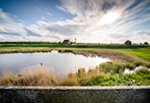
Back from the dead: the ‘zombie’ ponds repumping nature into Essex farmland
Discover how revitalizing neglected ponds on farmland has led to the resurgence of rare plants and wildlife, demonstrating the impact of community-led conservation efforts.

Study documents extinction threats to world’s freshwater species
Gain insights into the challenges facing freshwater biodiversity, with a significant percentage of species at risk due to pollution, habitat loss, and other human-induced factors.
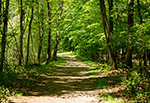
What would happen if all the world’s trees disappeared?
The article explores the catastrophic consequences of global deforestation, from biodiversity collapse to extreme climate shifts, highlighting trees’ crucial role in sustaining life on Earth

Holding Onto Awe Amid Biodiversity Loss
Pulitzer Prize-winning journalist Elizabeth Kolbert and naturalist Craig Foster explore how wonder and reverence for nature can drive action in the face of mass extinction.
 To See
To See
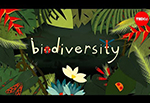
Why is biodiversity important
It explores the three levels of biodiversity—genetic, species, and ecosystem diversity—and illustrates how each contributes to the robustness of natural systems.

I built a wildlife pond – here’s what happened
Watch this inspiring account of a man who turned a patch of grass into a healthy, thriving ecosystem.
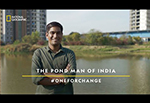
 To Listen
To Listen
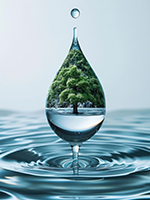
Returning to each other and the remembrance of “Water is Life”
Explores the question – “What does it mean to remember ourselves as representatives of our rivers, oceans, and other earthly bodies of water?”
 To Play
To Play

Fight the Nature Crisis
Collect seeds, plant them while also participating in an educational quiz!

Jungle Jeopardy
Set in a jungle environment, players make decisions to help different species survive by ensuring they have the right food, shelter, and environmental conditions.
SGI Founding President, Mr. Daisaku Ikeda writes in ‘Discussions on Youth’, “Only when we living things are connected to nature, engaged with nature, are we truly alive and vigorous. To really be alive, one must be under the sun, the moon, the shining stars, surrounded by the beautiful greenery and pure waters of the natural world. A dirty, fouled environment is not natural. When people live in such surroundings, their hearts become polluted, too. That is the oneness of life and environment.”
Science now confirms what ancient wisdom always knew: the state of our environment shapes our physical and mental well-being. Research reveals that exposure to greenery reduces stress, improves cognition, and even strengthens immunity. Clean air fosters clear thinking. Flowing water refreshes not just the body but the spirit. Conversely, when nature suffers—when skies turn gray with smog, when rivers stagnate with waste—our inner worlds mirror that decline.
President Ikeda asserts, “One who loves nature can cherish other people, value peace and possess a richness of character unfettered by selfish calculations of personal gain or loss. Those who live in a calculating way will end up calculating their own worth detrimentally. Such a life is limited in the extreme. Nature, however, is infinite.”
Modern life often pulls us toward a life of calculation, competition, and scarcity. We measure success in numbers, relationships in advantages, and time in productivity. But as President Ikeda warns, a life confined to such calculations inevitably leads to a hollow life. True fulfillment does not lie in what we accumulate, but in how freely we can give, connect, and exist within the infinite embrace of nature.
President Ikeda writes in his novel ‘The New Human Revolution’, “”Rampancy of the spirits” can be interpreted as wrong thinking – and nothing could be more wrong than the fundamental perversion of thought that national gain and corporate profit are more important than human life.”
Consider the destruction of forests for industrial expansion, the pollution of rivers for corporate efficiency, the sacrifice of indigenous lands for resource extraction. These are not merely environmental crises; they are moral crises. They reveal a world where the wellbeing of the planet is secondary to economic ambitions. The consequences are not abstract. Every heatwave, every flood, every drought is a direct outcome of this misalignment. Every displaced community, every species pushed to extinction, every breath of polluted air speaks to the cost of placing profit over people.
The way forward is not to reject advancement, but to redefine it. A flourishing world is not one measured by GDP alone, but by the health of its ecosystems, the well-being of its people, and the harmony between human progress and natural integrity.
In the same novel, President Ikeda writes, “It is not the politicians or businesspeople who should take the initiative in fighting pollution. Rather, the awareness of a unified public will move government and business to act.” History proves this. Environmental protections, clean energy revolutions, conservation efforts—none emerged from passive expectation. They were ignited by ordinary people who refused to accept destruction as the price of progress.
Today, we stand at a similar crossroads. If we wait for change to trickle down from those in power, it may come too late. But if we become the force that demands a different future, the world will have no choice but to follow. The forests, the rivers, the skies—they are not just landscapes; they are life itself. And life, when fiercely protected, will always find a way to flourish.
The question is not whether change is possible. The question is: Will we be the ones to make it happen?
Witnessing a Miracle: The Arribada and the Power of Conservation Shubham Palit | Young Men’s Division | Kolkata

I became a voluntary member of Bharat Soka Gakkai in 2020. In the midst of the pandemic, I discovered a philosophy focused on the happiness of all living beings. To me, it serves as a reminder that the planet belongs not just to humans but to all living beings, and it is our responsibility to heal and secure the planet.
The Arribada is one of nature’s most awe-inspiring events. Hundreds of thousands of Olive Ridley turtles emerge from the ocean, moving in unison to nest on the shores of Odisha and Andhra Pradesh. This phenomenon is rare, unpredictable, and lasts only a few days each year, making it one of the most challenging events to document.
Marine wildlife often goes unnoticed compared to tigers, rhinos, or elephants, simply because we know so little about it. That lack of awareness drives my passion—to bring these hidden wonders to light and inspire action for their conservation
For six years, I had attempted to witness this spectacle without success. As a wildlife photographer balancing a demanding career and family life, I often struggled to align my travels with nature’s unpredictable rhythms. This year, however, I was determined to capture the Arribada against all odds. I planned a trip to Rushikulya, a coastal village in Odisha, aiming to observe the turtles from a fishing boat. However, due to scheduling conflicts, I had to delay my visit by a week—an unexpected shift that, in hindsight, felt like nature’s own design.
On the night of my arrival, I decided to sleep on the beach despite the risks posed by wild boars and jackals. At around 3 AM, I awoke to a breathtaking sight: thousands of turtles crawling ashore in perfect synchrony, digging nests with their flippers, and laying eggs. I was left utterly speechless. The sheer scale, the instinctive precision of these creatures, and the thought that each female had returned to the very beach of her birth to continue the cycle of life filled me with profound humility. Had I arrived just a few days earlier, I would have only seen them in the open ocean. Instead, I had stumbled upon an ecological marvel, a moment that felt like a rare gift from nature.
Later, I learned that over 600,000 turtles had nested at Rushikulya—the highest number ever recorded. This was a triumph not just of nature, but of the tireless efforts of the Forest Department and conservation groups working to protect these endangered creatures. The fact that such a massive nesting event could still take place is proof that conservation works. Decades ago, rampant poaching, habitat destruction, and fishing-related fatalities had pushed Olive Ridley turtles toward the brink. It is only through relentless conservation initiatives—such as beach protection, monitoring of nesting sites, and community engagement programs—that we are able to witness such extraordinary natural phenomena today.
Without these efforts, the Arribada might have become a relic of the past, a story told rather than an experience lived. This realization made me even more appreciative of the work that conservationists do, often with limited resources and against great odds. Their efforts ensure that these turtles, and countless other species, continue to thrive and that future generations can witness the wonders of the natural world firsthand. I felt privileged to document such an extraordinary event, but even more so to see, with my own eyes, the tangible impact of conservation in action.
This experience deepened my commitment to using photography as a tool for conservation. A single powerful image has the potential to awaken people to the beauty and fragility of the natural world. Through my work, I strive to raise awareness of India’s rich biodiversity and inspire collective action to preserve it. I actively engage with local communities—fishermen, forest-edge villagers, and urban dwellers alike—helping them understand their role in conservation. From protecting marine life to restoring urban green spaces, I believe that even small efforts can create lasting change.
My lifelong mentor, SGI President Daisaku Ikeda has written, “The destruction of nature is the destruction of humanity. Nature is our home. All life on this planet, including human life, was born from the natural environment. We don’t owe our existence to machines or to science. We are the products of nature.”
The Arribada reminded me that nature operates on its own terms, beyond human control. It humbled me, making me realize that we are not separate from the natural world but deeply intertwined with it. My journey as a conservation photographer is not just about capturing images; it is about fostering a sense of awe, respect, and responsibility toward our planet. I pledge to continue this work, advocating for the protection of life both on land and in the ocean, and ensuring that future generations can witness the same wonders that left me in absolute awe that night on the shores of Rushikulya.
Bridging Business and Sustainability: A Journey Towards Conscious Impact Vidhi Thukral | Young Women’s Division | Delhi

I am Vidhi Thukral, a voluntary member of Bharat Soka Gakkai since 2012. Encountering Soka humanism has profoundly enriched all aspects of my life, both personally and professionally.
Since 2018, I have dedicated my career to environmental, wildlife, and energy laws within the development and government sectors. In 2022, I transitioned to the corporate world with a life insurance company, taking on a newly established role focused on Environment, Social and Governance (ESG). This opportunity was a significant shift for both the company and myself, prompting me to dive deep into the subject matter.
Companies are often seen as the root cause of environmental problems, but I believe that real impact happens at the intersection of sustainability and responsible business practices. Being in this space allows me to push for change from within, demonstrating that corporations can be part of the solution rather than just the problem.
As part of my responsibilities, I worked on enhancing the company’s energy efficiency and improving water and waste management practices. Given that electricity constitutes a major portion of our Scope 2 emissions in the service sector, we initiated efforts to increase energy efficiency within our offices. Our green project involved replacing outdated CFL bulbs with LED lights and upgrading old air conditioning units to five-star rated systems. In one of our wholly owned offices, we also installed a 25KW solar panel system. Additionally, we developed a strategy to transition to greener energy sources, successfully converting our branch offices in Mumbai to sustainable energy due to the relatively easier implementation in Maharashtra compared to other states.
On the waste management front, we ensured 100% recycling of our e-waste. During a conference, I connected with the founder of a sanitary waste recycling company, who shared their innovative approach to converting sanitary waste into stationery products through 5D technology. I presented this idea to my management, and they approved the installation of these products in our offices, thereby promoting sanitary hygiene awareness while recycling waste.
After a few months, I had the opportunity to engage in Corporate Social Responsibility (CSR) projects. This involved revitalizing two concrete-filled ponds in Gurgaon into clean water bodies and conducting a large-scale tree plantation drive. We successfully planted 25,000 saplings in Bhondsi, Gurgaon, utilizing the Miyawaki forest technique.
My vision is to build a consciousness-driven society where we wisely use the resources around us. Through my work, I strive to bridge the gap between corporate sustainability efforts and their real-world impact on communities and ecosystems.
Looking back, I see how small, consistent actions contribute to broader climate goals. Each initiative—whether reducing carbon footprints in office spaces, promoting circular waste solutions, or restoring natural ecosystems—adds up to meaningful impact. My work has reinforced the belief that sustainability is not just about large-scale policies but also about the everyday choices individuals make. In every sector and role, there are opportunities to integrate climate-conscious decisions. The key lies in recognizing them and taking action.
 SDG Tip for Daily Life
SDG Tip for Daily Life
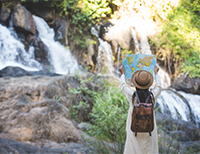
“Leave No Trace”
Adopt a “Leave No Trace” mindset when visiting forests, lakes, or wetlands. Carry reusable bottles, avoid single-use plastics, and never disturb natural habitats. Small mindful actions, like picking up litter, using eco-friendly soaps, or supporting wetland conservation efforts, help protect the waters and woods that sustain life.
10 Tips for traveling more responsibly – Find here
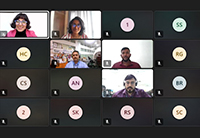
Updates
BSG Leads Webinar on “Sustainable Human Behaviour” and “Gender Equality” for TCS Associates and MOP Vaishnav College for Women, Chennai
As part of its commitment to fostering sustainability awareness, Bharat Soka Gakkai (BSG) conducted an online webinar on Sustainable Human Behaviour and Gender Equality for Tata Consultancy Services (TCS) associates and MOP Vaishnav College for Women, Chennai.
Read more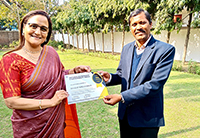
Society for Environment and Sustainable Development Honors BSG with National Environment & Sustainability Award
The Society for Environment and Sustainable Development (SESD) honors BSG with the ‘National Environment & Sustainability Award’ under the category of ‘Sustainability Excellence Award’.
Read more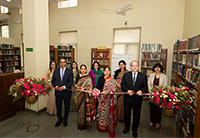
A New Dawn for Education and Peace: ‘Dr. Daisaku Ikeda Corner’ at Miranda House College Contact Us
Bharat Soka Gakkai, in collaboration with Miranda House College, inaugurated the ‘Dr. Daisaku Ikeda Corner: Fostering Peace Culture, Education, and Sustainability’ in the college library. This dedicated space houses SGI Founding President Mr. Daisaku Ikeda’s engaging and enlightening dialogues with world leaders.
Read more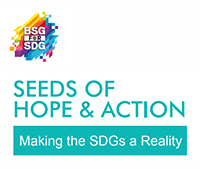
BSG has now Successfully Held over 210 SOHA Exhibitions
The ‘Seeds of Hope and Action (SOHA): Making the SDGs a Reality’ exhibition has travelled to 210 destinations across the country, including: Chandigarh, Amritsar, Jaipur, Delhi, Karaikal, Gangtok, Kalimpong and Hurda, Rajasthan.
Read more
BSG forms the 31st SDG Club in Parul University, Vadodara
As part of its mission to foster young SDG ambassadors in Indian schools and colleges, BSG established the 31st SDG Club in Parul University, Vadodara.
Read moreContact Us
 Any queries or suggestions regarding the newsletter can be addressed to sdg@bharatsokagakkai.org
Any queries or suggestions regarding the newsletter can be addressed to sdg@bharatsokagakkai.org
 To know more about the ‘BSG for SDG’ initiative, visit the BSG for SDG website
To know more about the ‘BSG for SDG’ initiative, visit the BSG for SDG website
 Download the ‘BSG for SDG’ mobile app with the carbon footprint calculator
Download the ‘BSG for SDG’ mobile app with the carbon footprint calculator

